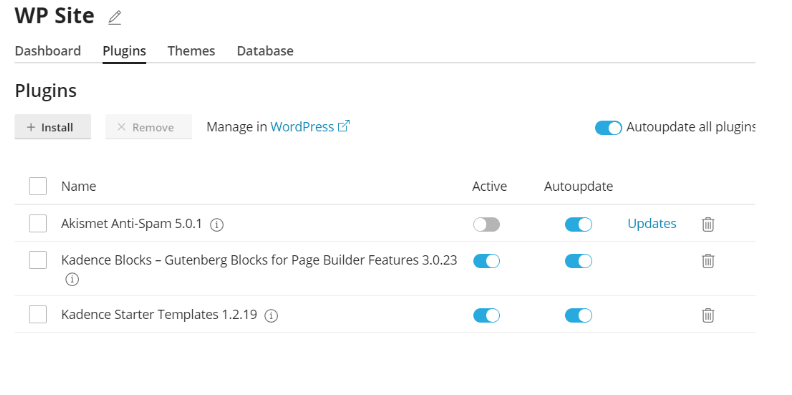Securing WordPress with WP Toolkit
Step 1
If you need clarification on what each option does, click on the tooltip (symbol to the right of the name), and it will appear with an explanation. By default, none of the security options will be selected.

Click the checkboxes next to all the hardening options you want to apply to your site and click Secure to save them.

Click the Check Security button to confirm the correct security hardening settings have been applied.

STEP 2
It is also recommended to verify the WordPress core checksum. This will help you know if there are files in WordPress core on your site that have been updated and files that have been added that shouldn't be on a WordPress site. You can also reinstall the WordPress core files from within the WP Toolkit portal.

Any known WordPress vulnerabilities will be displayed in the WordPress Vulnerabilities tab, which can be found within the Security Status section of WP Toolkit.

Updating WordPress With WP Toolkit
STEP 1
The WordPress core is the most important part of your site and should be constantly updated. WordPress usually has several major releases per year. Also, minor WordPress core releases are usually released for bug and security fixes. Therefore, it is always recommended to install minor WordPress core releases.
Whether creating a new WordPress site or updating an existing one, you can set which major and minor updates to the WordPress core should be updated automatically. You can also specify how plugins and themes are installed on the site. You can also force plugins and themes to update in WordPress.

Step 2:
The plugins and themes you install are another part of your WordPress site that should be updated. Plugins that are not updated are still using outdated versions, which have security issues and are one of the most significant sources of malware infections. Waiting weeks to update plugins is not recommended as your site will be protected faster by ensuring that plugin updates are done regularly on your site.
The preferred way to keep plugins updated on your site is to use the Smart Update feature in WP Toolkit as it will create a test version of the site and check that it doesn't break after the plugin is updated.

Once the process is complete, you can confirm the plugin update, which updates it on the production site.

Plugins can be updated in the WP Toolkit portal, and you can set installed plugins to update automatically.

Step 3:
Themes can also be controlled in the WP Toolkit portal. For example, you can delete and update themes and set which ones should update automatically.

